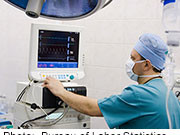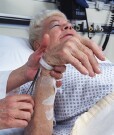Tag: Hospitals
Productivity Growth in U.S. Hospitals During 2002 to 2011
In adjusted analyses, productivity growth seen for treatment of heart attack, heart failure, pneumonia
Intervention Cuts Drug Prep Errors for Peroral Drugs
Drop in incorrect crushing and/or suspending of solid peroral drugs for patients with feeding tubes
Advantages of Shorter Resident Shifts Found Lacking
Shorter medical resident duty hours may be worse for patients and only slightly better for residents
Infection Most Common Readmission Reason Post-Surgery
Knowing why readmissions happen is first step in reducing them, researcher says
January 2015 Briefing – Nursing
Here are what the editors at HealthDay consider to be the most important developments in Nursing for January 2015. This roundup includes the latest...
January 2015 Briefing – Critical Care
Here are what the editors at HealthDay consider to be the most important developments in Critical Care for January 2015. This roundup includes the...
Hepatitis A Hospitalizations Down From 2002 to 2011
Increase in age of those hospitalized, and in percent of hospitalizations covered by Medicare
Chlorhexidine Bathing Doesn’t Cut Health Care-Linked Infections
No difference in primary outcome for bathing with chlorhexidine versus nonantimicrobial cloth











